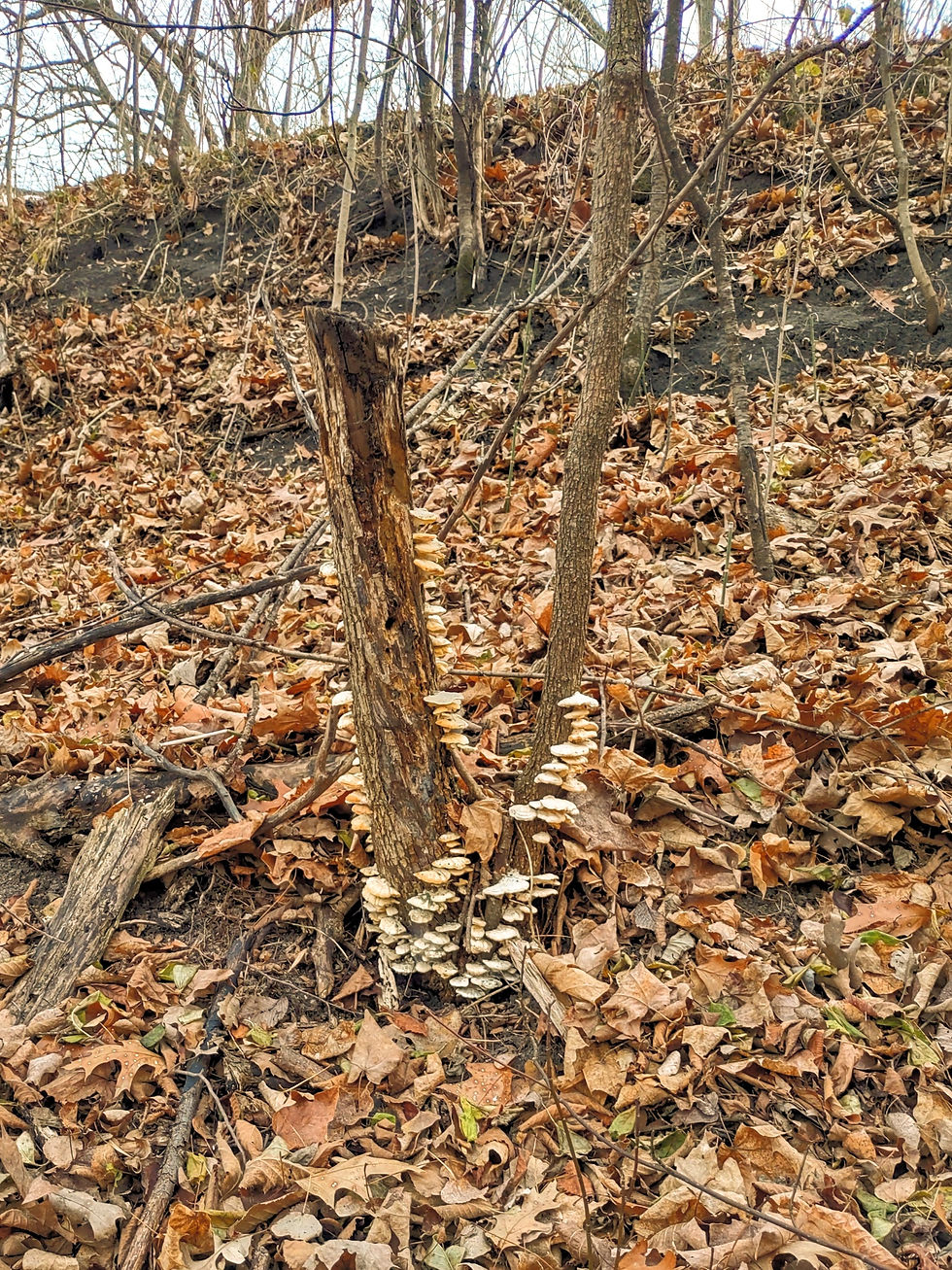What’s In A Name?
- D. S. Brumitt
- Oct 13, 2023
- 1 min read
Updated: Oct 18, 2023
Scientists’ wordplay.

Which is more fun, leucoagaricus meleagris or turkey-fowl-naked-foot? In between 1798 and 1945 mycologists named - and renamed - this curious fungus dozens of times including such beatific monikers as gymnopus meleagris, lepiota meleagris, coccobotrys xylophilus , mastocephalus biornatus, and leucocoprinus meleagris.
Whatever you call them, one grey and drippy afternoon I noticed this crowd of delightful little mushrooms appearing to be scurrying away from the trail in a big hurry. My sources described them as “small dapperlings” (dapper little fellows) with white flesh in the campanulate plano-convex cap and broad umbos. The minute I spied them these lads put up their umbros and waggled off into the woods.
"Names, once they are in common use, quickly become mere sounds, their etymology being buried, like so many of the earth's marvels, beneath the dust of habit."
Salman Rushdie.
How they arrived at turkey-fowl-naked-foot I never found out. But I discovered a collection of other “naked-foot” named fungi in the Biodiversity Heritage Library*.
My favorites include cloudy, feathery, snail, short-stemmed, tuberous, flattened, white, ivory, parasitic, hairy-stemmed, and stinking.
* A natural arrangement of British plants : according to their relations to each other as pointed out by Jussieu, De Candolle, Brown, & Co - 1821 edition.



Comments